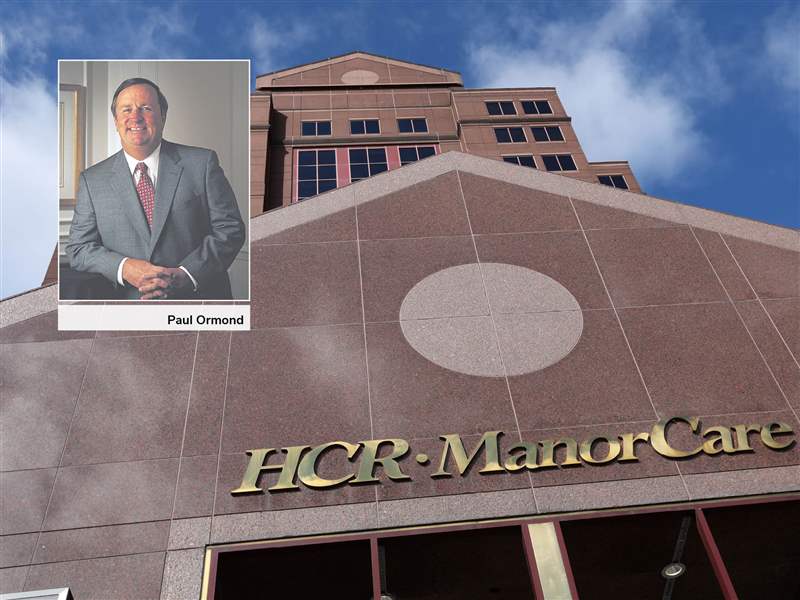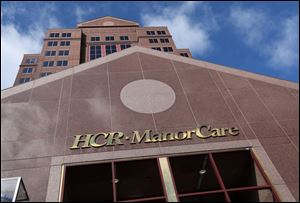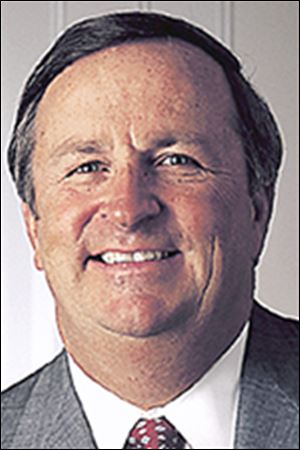
How former CEO of HCR ManorCare came to be owed $116.7 million
3/18/2018
Paul Ormond was always among Toledo’s highest paid executives, frequently topping his peers with annual paydays often exceeding $10 million.
But in many of those years, the former president and chief executive of HCR ManorCare Inc. apparently never saw a lot of those millions, deferring a chunk of them to the future when he was no longer with the company.
Unfortunately for ManorCare, one of the nation’s largest operators of senior care facilities, that future arrived two weeks ago when the company filed Chapter 11 bankruptcy.

Deferred payments to former chief executive Paul Ormond were part of the bankruptcy package agreed to by HCR ManorCare.
Struggling for nearly a year to pay its landlord, Quality Care Properties Inc., ManorCare has agreed to be absorbed later this year by the landlord under a prepackaged bankruptcy plan.
But the plan also states that Mr. Ormond, 67, must get what he is owed — $116.7 million.
To outsiders, Mr. Ormond’s payment may look unnecessary and excessive.
“It just looks bad with a company that can’t make its rent and the former CEO gets a package of $116 million,” said Stephen Monroe, a health-care industry consultant and partner at Connecticut health-care research firm Irving Levin Associates Inc.
RELATED CONTENT: ManorCare in for soft landing after bankruptcy
But Mr. Monroe said it’s clear to him that the bankruptcy and the payment are not related.
“One had very little to do with the other,” he said. The problem, he added, was that apparently a big chunk of Mr. Ormond’s pension had not been funded.
Also, it appears that ManorCare was well aware of the liability.

Ormond
The Toledo company acknowledge it had an unfunded executive pension liability of $115.3 million in 2016, according to an SEC filing by Quality Care last April that included a report on ManorCare finances.
Neither ManorCare nor Quality Care would comment on the issue.
A bankruptcy judge still has to approve the settlement and it is possible the payment could be lessened or reduced.
But Mr. Monroe said he doesn’t think that’s likely because under the bankruptcy plan, all suppliers, employees, and creditors will continue to be paid. And more importantly, Quality Care said it would pay Mr. Ormond’s claim.
“Paul has a claim because he had a contract and this was in all his different retirement plans. But if it was not funded, is he an unsecured creditor under bankruptcy?” Mr. Monroe said. “However, if both sides have agreed to make the payment to [Mr. Ormond], I don’t know how a judge can stick his nose in it and disallow it.”
How ManorCare got into owing its former CEO so much is a result of lavish compensation plans that many company boards bestow on their executives.
Such plans included bonuses, stock options, long-term rewards, and supplemental retirement funds that defer compensation to the future. Some companies require a structure pension annual payout but others allow lump sums.
For example, when former CEO Glen Hiner retired from Owens Corning in 2002 with the company still in bankruptcy, he got a lump-sum pension payment estimated to be around $10.4 million. Mr. Hiner already had lost considerable value from his OC stock, which became virtually worthless in 2002.
Since then, pension liability with regards to executive compensation has become a big issue, said David Larcker, a Stanford University professor and expert on executive compensation matters.
“These supplemental retirement plans, which in truth are going out of business because shareholders have complained about them in public companies, some of them can be astronomical sums because they can be based on the last three of four years of salary and bonuses,” Mr. Larcker said.
Yet, according to a 2017 Prudential/PlanSponsor benefit survey, 85 percent of companies still offer nonqualified deferred compensation plans, with 96.8 percent of large companies and 68.9 percent of small companies offering them. The average participation rate in the plans is 47 percent.
Last June, when word of ManorCare’s difficulties of paying its rent to Quality Care surfaced, the New York Post reported that Mr. Ormond had asked for immediate payment of his $100 million deferred settlement package.
Documents later revealed that Quality Care agreed to pay Mr. Ormond, who stepped down in September, $60.7 million from a senior executive retirement plan that previously was frozen, $9.8 million from a replacement retirement plan, $42 million from a management savings plan, and $3.9 million in severance.
Citing unnamed sources, the Post suggested Mr. Ormond’s payment came from a generous package he received from private equity firm the Carlyle Group when it bought the company in 2006.
But Mr. Larcker suggested the amount is large because Mr. Ormond was with ManorCare for 32 years.
The former CEO oversaw ManorCare since 1986, when it was owned by Owens-Illinois Inc. He helped grow it into the nation’s top elder-care chain and was at the helm in 2006 when the public company was bought by Carlyle for $6.3 billion.
In 2006 when the Carlyle purchase happened, documents show Mr. Ormond received $17.3 million.
But prior to the buyout, he got a compensation package of $19.8 million in 1998, $16 million in 2003, $11.5 million in 2004.
Throughout those years, he was deferring much of his compensation to the company’s retirement plans. Mr. Ormond put $3.3 million into his pension in 2006, the year before the company went private.
Mr. Larcker said supplemental executive retirement plans were developed to retain key executives. They have been around a long time but shareholders have started to see the risk in them and complain.
“These supplemental retirement plans, that can build up to some considerable numbers,” Mr. Larcker said.
One of ManorCare’s peer, Genesis HealthCare, has done away with it executive retirement plan.
A $5.7 billion company, Genesis continues to pay its top executive, George Hager, Jr., very well, giving the CEO about $2 million in salary and stock last year.
But in its Securities and Exchange Commission filing it clearly states, “We do not have any significant perquisites or retirement programs” under executive compensation.
Contact Jon Chavez at jchavez@theblade.com or 419-724-6128.